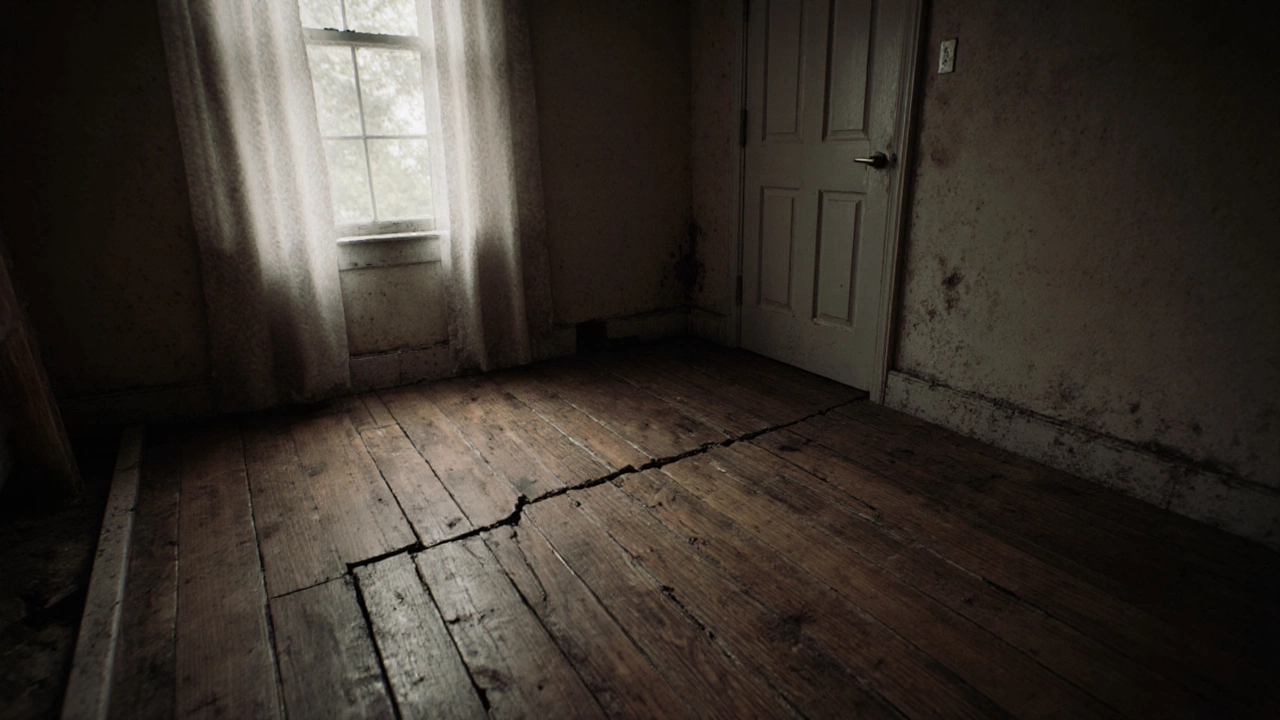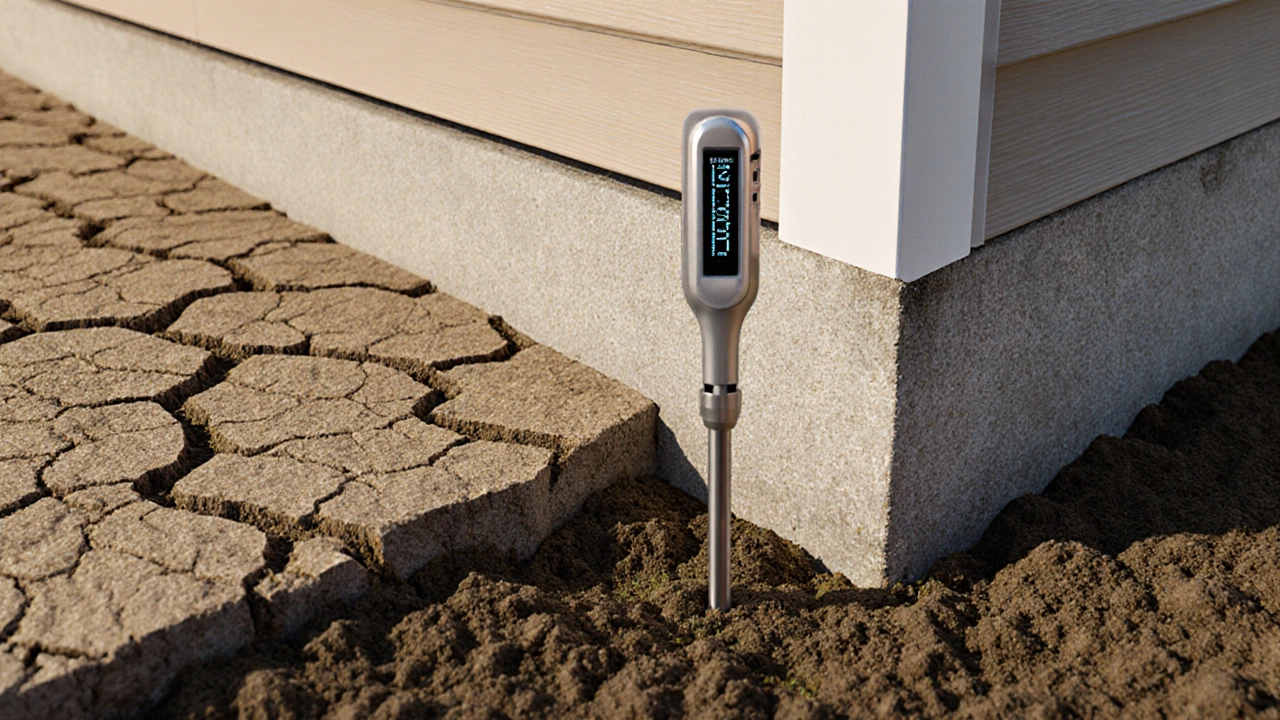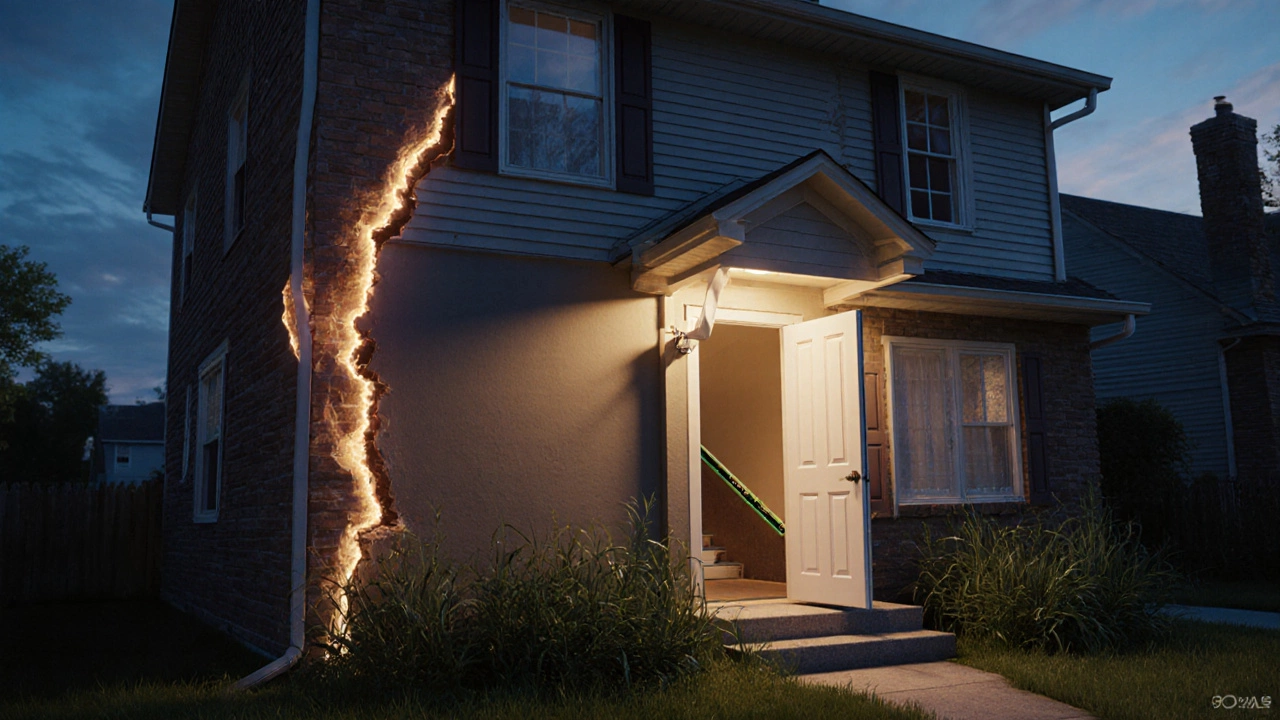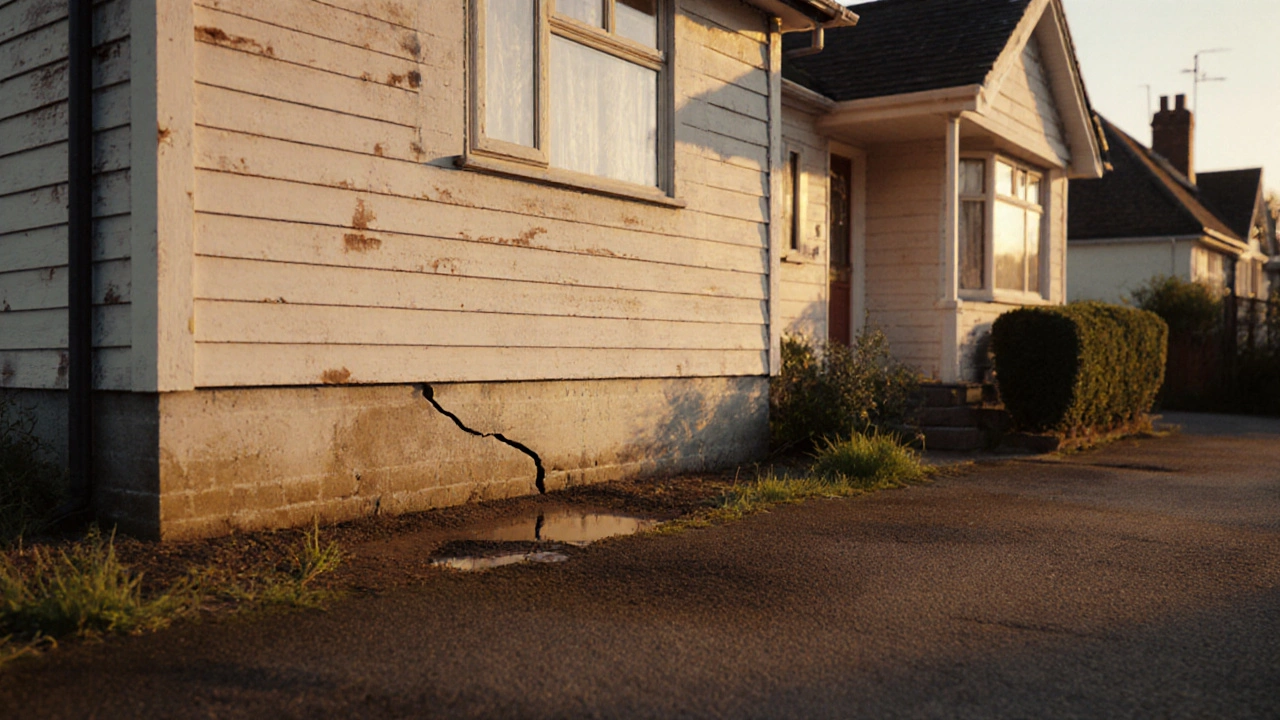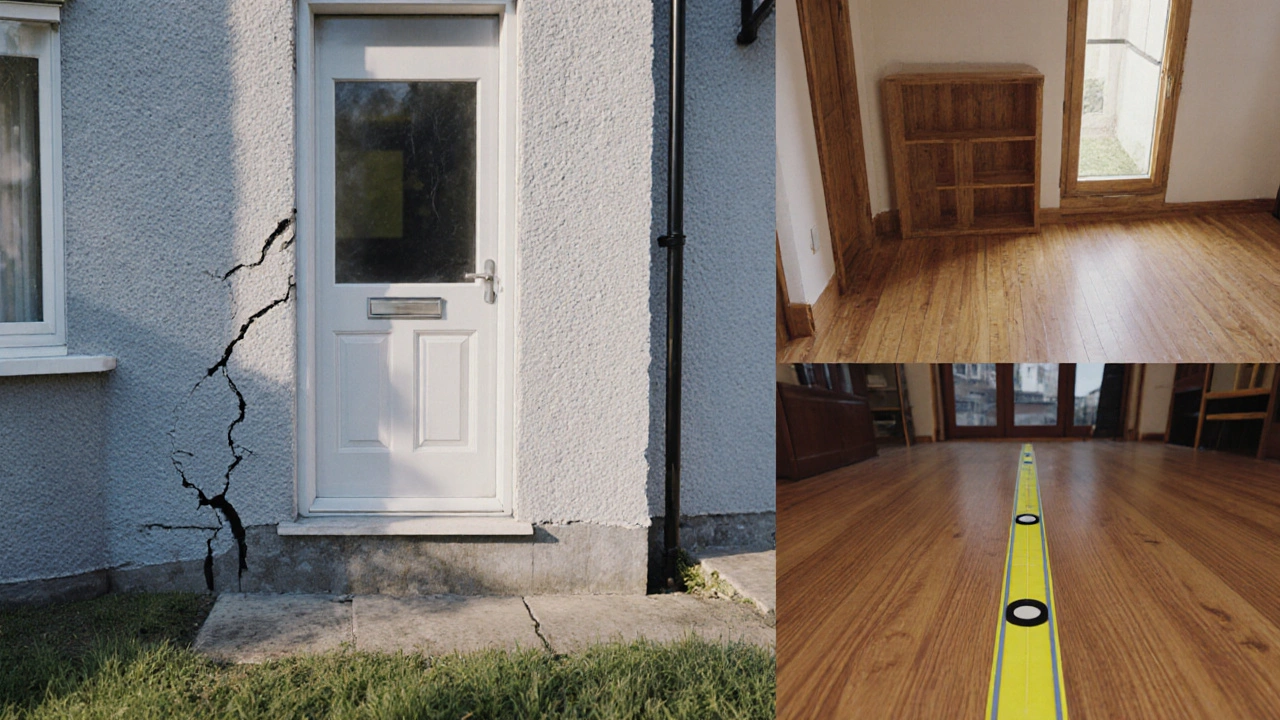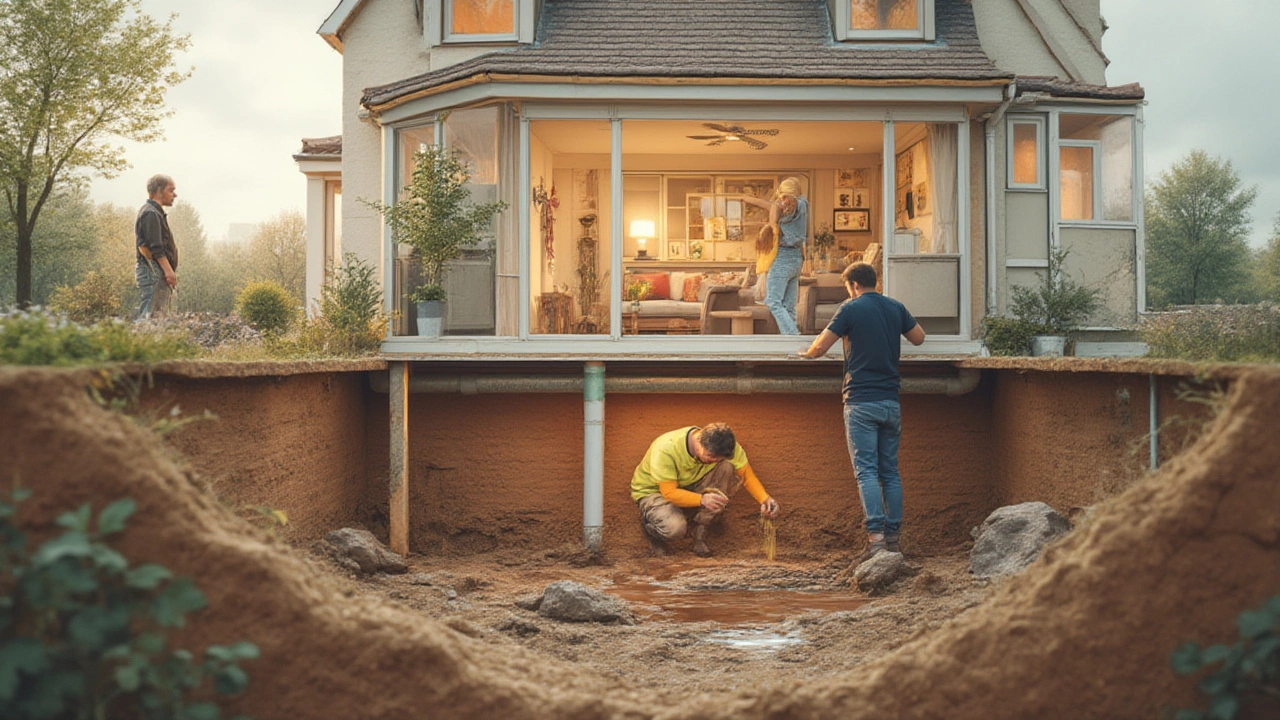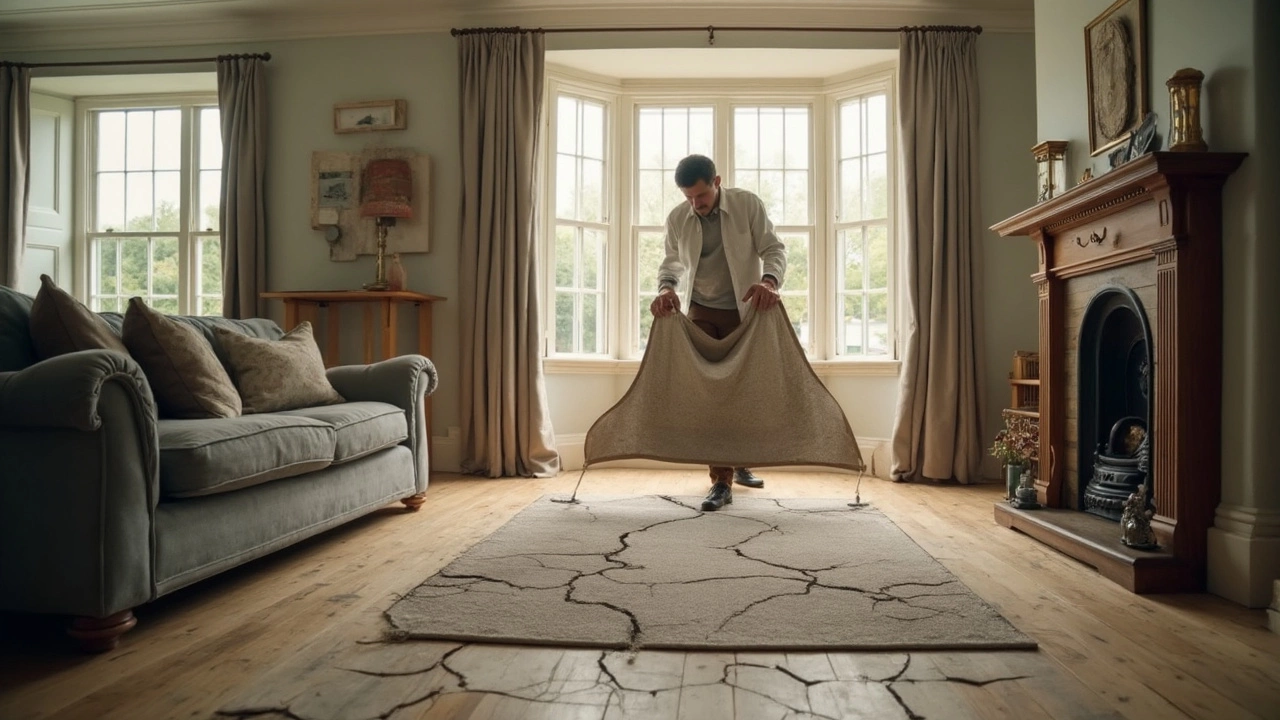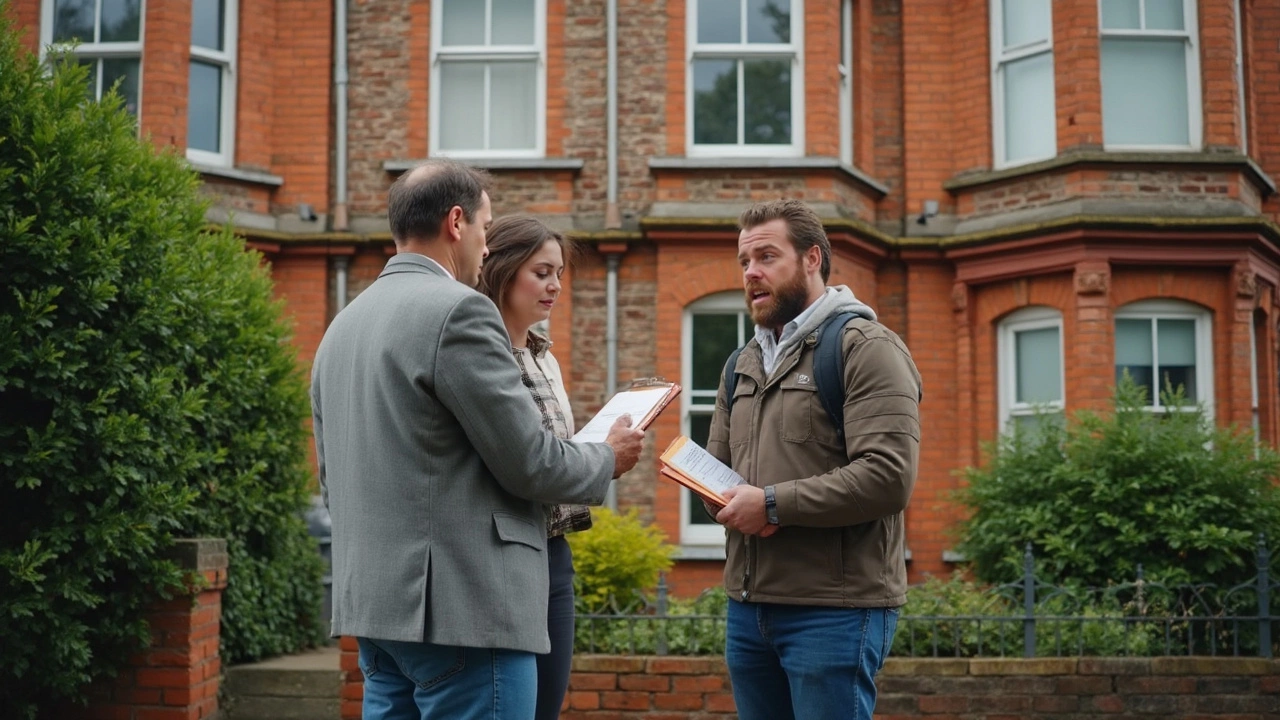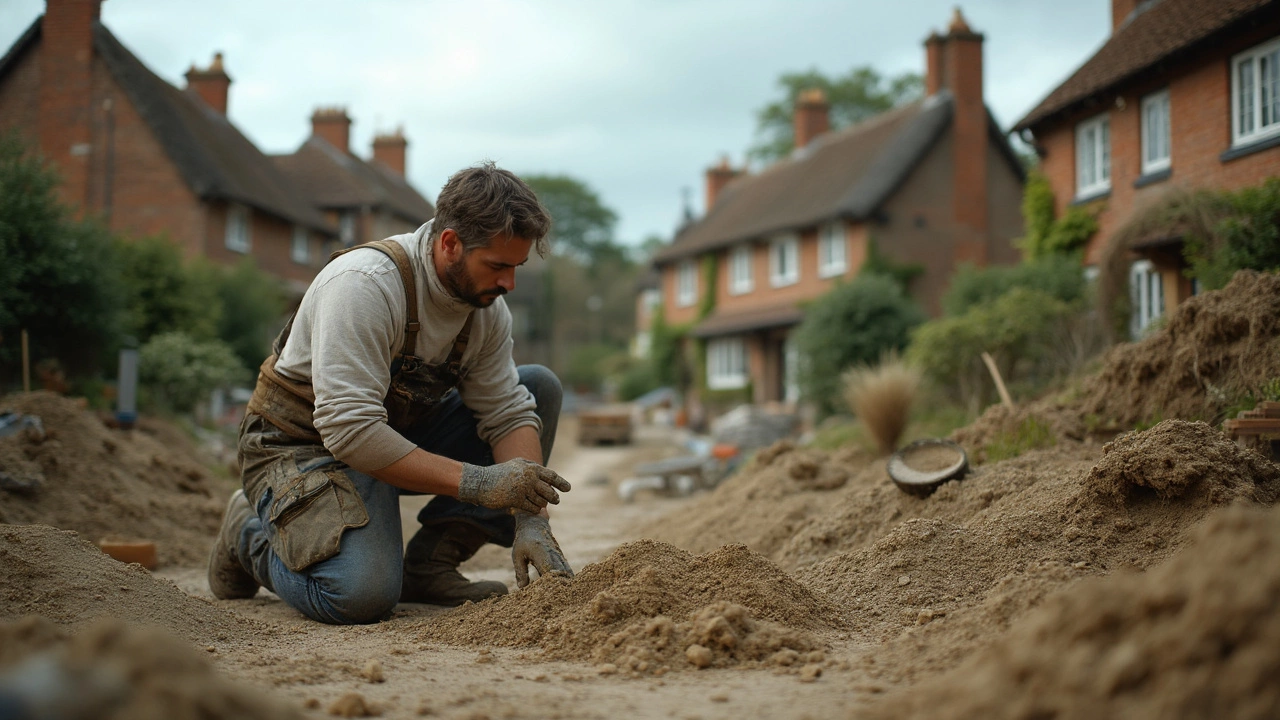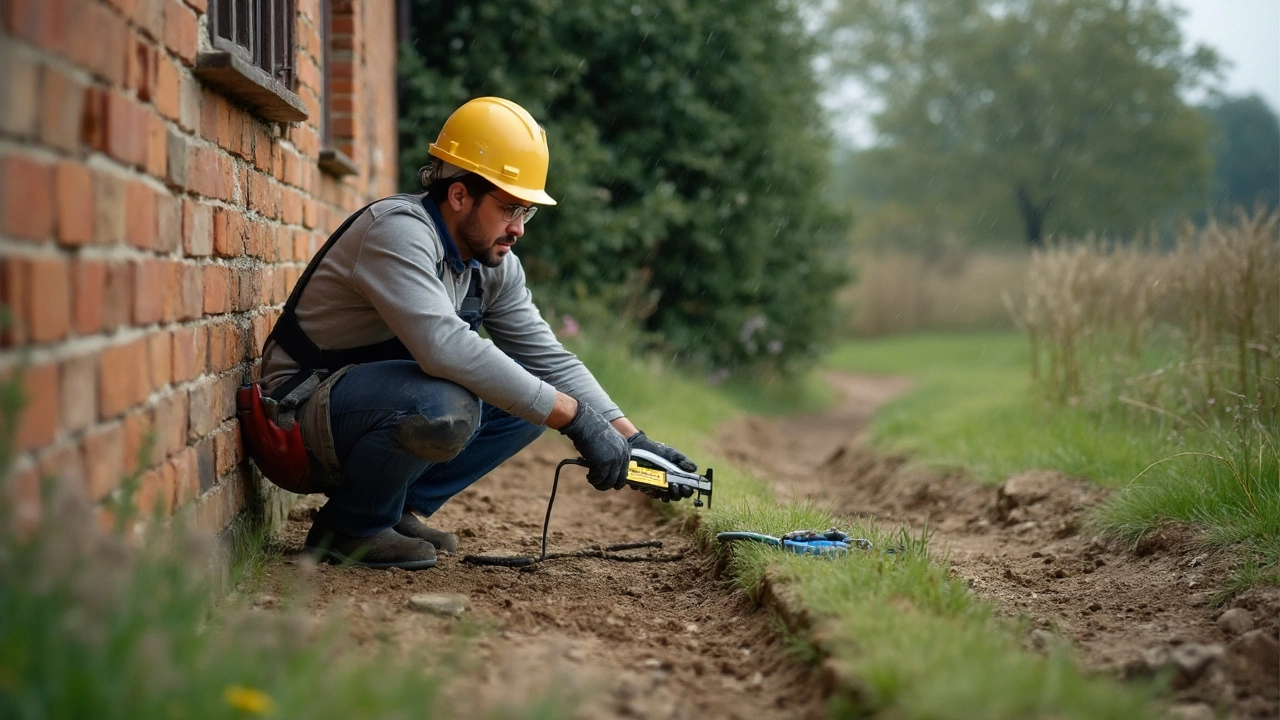Most home insurance policies don't cover sagging floors unless caused by a sudden event like a storm or fire. Learn what actually triggers coverage and how to pay for repairs when insurance says no.
Foundation Repair: What Every Homeowner Should Know
If your house is making weird noises, has cracks in walls, or doors that stick, your foundation might be talking. Ignoring these clues can lead to bigger, costlier repairs later. Below we break down the most common signs, the main repair methods, and how to budget so you aren’t surprised by the bill.
How to Spot Trouble Early
First, walk around the outside of your home. Look for uneven slabs, gaps between bricks, or soil that seems to be pulling away from the wall. Inside, check for horizontal cracks over 1/4 inch, doors that won’t close properly, and windows that jam. If the floor feels bouncy or you notice a wobble in the kitchen countertop, those are red flags too.
Another easy check is the water level in your basement. If it climbs after a rainstorm, the soil around your foundation may be shifting. Keep a notebook of any changes you see – a timeline helps the contractor pinpoint the cause.
Common Repair Options and When They Fit
Not all foundation issues need the same fix. Here are the three most common solutions:
- Piering (or underpinning): Steel piers are driven deep into stable soil and then attached to your footing. It’s the go‑to for serious settlement or when the soil is highly unstable.
- Slabjacking (mudjacking): A concrete mix is pumped underneath a sunken slab to lift it back into place. It works well for minor dips and is quicker than piering.
- Crack injection: Polyurethane or epoxy is injected into concrete cracks to seal them and stop water infiltration. Ideal for small, isolated cracks.
Choosing the right method depends on the severity of the movement, the type of foundation (crawl space, slab, basement), and your budget. A qualified inspector will run soil tests and a structural assessment before recommending a solution.
Speaking of budget, major foundation repair can range from £5,000 for simple crack injection to £30,000‑£50,000 for full piering on a large home. Costs are driven by depth of piers, access difficulty, and local labor rates. Always ask for a detailed quote that lists materials, labour, and any additional work like drainage improvements.
Don’t forget about the timeline. Minor repairs like crack injection can be finished in a day or two. Piering and slabjacking usually take 1‑3 weeks, including site prep and curing time. Plan for temporary relocation if your living space is heavily affected.
While DIY fixes sound tempting, foundation work is best left to professionals. Incorrect placement of piers or poor-quality injectants can cause further movement, leading to higher costs down the line. However, you can do a lot yourself: keep gutters clean, ensure proper landscaping grading, and install a sump pump if water is a recurring issue. These preventive steps reduce stress on the foundation and can extend the life of any repair.
In summary, keep an eye on cracks, uneven floors, and water issues. Get a professional inspection at the first sign of trouble, understand the repair options, and budget accordingly. With the right approach, you’ll keep your home steady and avoid expensive surprises.
Learn when watering a house foundation helps or harms, how to monitor soil moisture, and better alternatives to prevent foundation cracks.
Learn if a foundation can truly be unfixable, spot warning signs, understand causes, and explore repair vs. rebuild options for your home.
Older homes often face foundation issues due to soil, construction methods, and moisture. Learn how to spot, assess, repair, and prevent these problems with practical tips.
Learn how to identify, diagnose, and fix major foundation issues. Get clear signs, causes, repair options, and a maintenance checklist to protect your home.
Find out if your homeowners insurance covers broken pipes under your foundation, learn the facts, expert tips, and what to do if disaster strikes.
Curious about what building insurance skips when it comes to your home’s foundation? This article lays out the common exclusions most homeowners miss and explains why foundation repairs often leave you out of pocket. Get straight answers and practical tips to avoid surprises when problems show up under your home. Learn what really matters so you aren’t caught off guard. Stay one step ahead and protect your investment.
Wondering what repair can give your wallet a heart attack during home renovations? This article breaks down the real budget-busters in houses, with stories, insights, and actionable tips to keep you from financial surprises. You'll learn why some fixes spiral out of control, what warning signs to watch for, and how to soften the blow before disaster strikes. Real-life fixes make this guide relatable and practical—all based on hands-on experience, not guesses. Avoid the worst pitfalls and keep your dream home from turning into a money pit.
Thinking about fixing your home's foundation? Foundation repairs can seem pricey, but ignoring them could cost you way more down the line. This article tackles whether these repairs are worth the investment, when they make sense, and what happens if you skip them. Get helpful tips, interesting facts, and real reasons homeowners decide to repair or hold off. No fluff—just straight talk about your home's safety, value, and peace of mind.
Wondering if your homeowners insurance covers structural damage like foundation problems? This article breaks down when insurance might help with costly repairs, what kinds of damage are usually excluded, and the tricky process of filing a claim. Get real-world examples, must-know tips, and straightforward advice to help you avoid expensive surprises. If you're staring at cracks in your walls or floors, this guide tells you what to do next. Protect your house—and your wallet—by understanding your policy's fine print.
When it comes to repairing a foundation, choosing the right cement is crucial. Different types of cement can address various foundation issues, offering solutions suited to specific needs. Weather conditions, existing damage, and the type of foundation all play a role in determining the best cement for the job. Make informed choices by learning about the types and uses of different cements, ensuring a safe and stable foundation.
Fixing a crack in a house foundation can vary in time depending on the size and severity of the crack. Minor fixes might be done in a day, while more severe cracks can require weeks of attention and careful work. It's crucial to consider the right repair methods and the expertise of the professionals involved. Safety and ensuring the integrity of the house are top priorities. With thorough assessment and planning, foundation repair can be managed efficiently.
